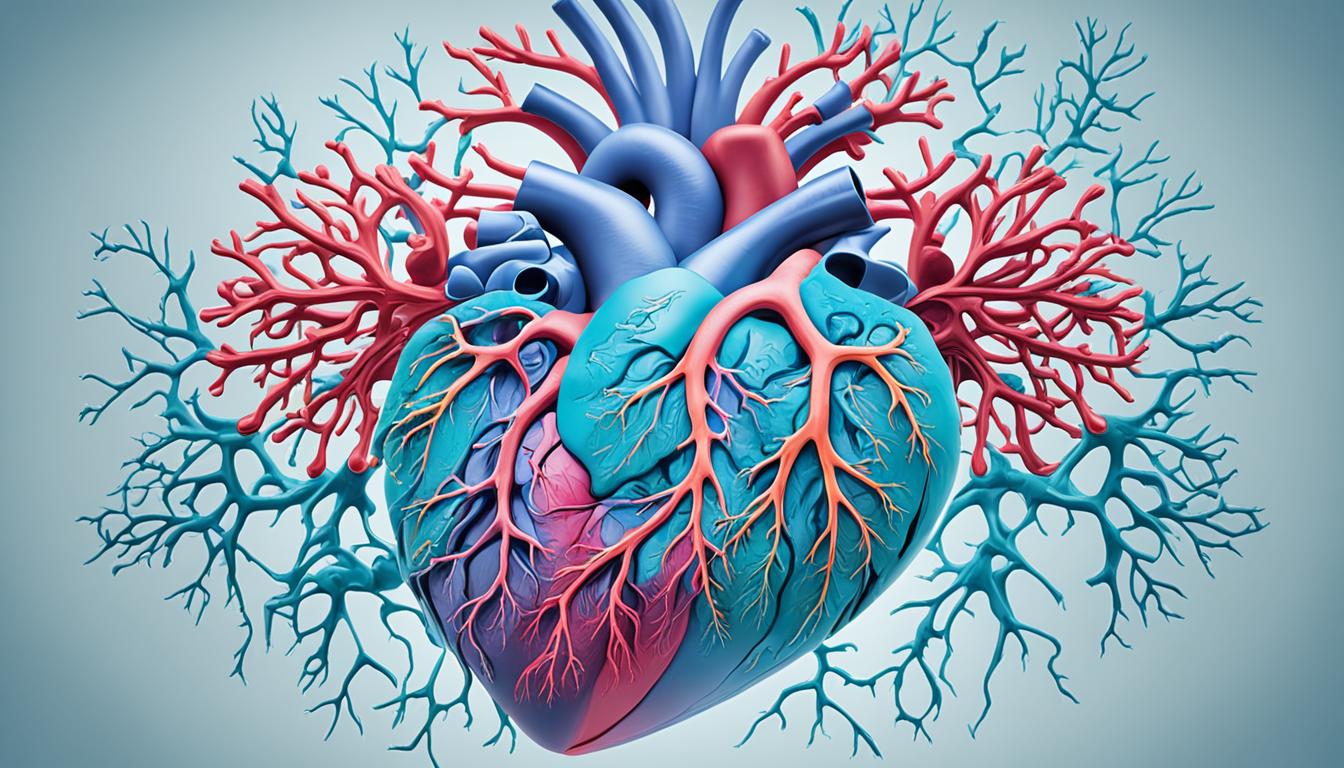Double outlet right ventricle (DORV) is a rare heart defect affecting how the heart’s main vessels connect. The right ventricle, normally sending oxygen-poor blood to the body, can’t do this right in DORV. It’s usually linked with a hole in the heart’s wall that separates blood, mixing oxygen-rich with oxygen-poor blood and causing trouble.
Without care, DORV leads to symptoms like a blue skin tint from low oxygen, slow growth, and high blood pressure in the lungs. Spotting and treating DORV early is key to avoid problems.
Doctors think DORV comes from both genes and the environment. Family history and some events during pregnancy could up the risk of a baby getting DORV.
To diagnose DORV, doctors look at your past health, check your body, and use heart imaging. This helps figure out the heart’s problem and how to treat it.
Managing DORV might involve drugs, heart surgery, or a new idea – stem cell therapy. This treatment aims to fix the heart by using the body’s own healing cells. Though it’s a modern idea, stem cell therapy offers hope for DORV and other heart problems.
Key Takeaways:
- Double outlet right ventricle (DORV) is a rare congenital heart defect where the pulmonary artery and the aorta connect to the right ventricle instead of their usual connections.
- DORV is always accompanied by a ventricular septal defect (VSD), which allows the mixing of oxygen-rich and oxygen-poor blood.
- Symptoms of DORV include cyanosis, poor growth, and risk of pulmonary hypertension.
- The exact cause of DORV is unknown but is believed to be a combination of genetic and environmental factors.
- Diagnosis involves a thorough evaluation, including medical history, physical examination, and imaging tests.
- Treatment options for DORV include medication, corrective surgery, and the promising field of stem cell therapy.
Signs and Symptoms of Double-Outlet Right Ventricle
Double-outlet right ventricle (DORV) is a complex heart issue. It shows up with different signs and symptoms. Knowing these signs early is key for early diagnosis and management.
Cyanosis
Cyanosis leads to a blueish tint in skin and lips, a main sign of DORV. It happens because blood doesn’t get enough oxygen. The heart’s vessels are not connected properly, causing this lack of oxygen.
Poor Growth
Children with DORV might grow slowly. They don’t get enough oxygen to their organs. This can make their bodies not grow or develop as they should.
Rapid Breathing (Tachypnea)
Tachypnea, or fast breathing, happens because the body tries to get more oxygen. This can make feeding hard and playtime less fun.
Fatigue
People with DORV may feel tired all the time. Their organs and tissues don’t get enough oxygen. This makes even simple tasks tough to do.
Pulmonary Hypertension
In severe DORV, pulmonary hypertension may occur. Lung blood vessels get narrow, making the heart’s right side work harder. This can cause more health problems.
| Symptoms | Description |
|---|---|
| Cyanosis | Bluish tint to the skin and lips due to low oxygen levels in the blood. |
| Poor Growth | Delayed growth and development due to inadequate oxygenation. |
| Rapid Breathing (Tachypnea) | Increased respiratory rate to compensate for low oxygen levels. |
| Fatigue | Persistent tiredness and reduced endurance. |
| Pulmonary Hypertension | Narrowing of blood vessels in the lungs, leading to increased pressure on the right side of the heart. |
If you notice these symptoms in yourself or a loved one, seek medical help right away. Early detection and treatment are important.
Causes and Risk Factors of Double-Outlet Right Ventricle
Double-outlet right ventricle (DORV) has no known single cause. It is a mix of genes and things in the environment. Families with a history of heart defects often see DORV occur more.
Mothers’ exposure to certain drugs or sicknesses while pregnant can up the risk of DORV. It’s really important for moms-to-be to be careful and healthy during pregnancy. This can help lower the chance of their baby having DORV.
Older moms, moms with diabetes, and certain genetic issues are more likely to have children with DORV. These are other important things to think about for someone’s risk.
Though we know quite a bit, more study on DORV causes and risks is needed. We want to understand everything possible about this heart defect.
Statistics on Causes and Risk Factors of DORV
| Risk Factors | Prevalence |
|---|---|
| Genetic Factors | 30-40% of cases |
| Maternal Medication/Infection Exposure | 10-20% of cases |
| Advanced Maternal Age | 5-10% of cases |
| Maternal Diabetes | 3-6% of cases |
| Genetic Syndromes | 3-5% of cases |
These statistics give a rough idea about the causes and risks of DORV. Remember, each case is unique. A doctor’s check is key to know for sure and to plan the right care.
Stem Cell Therapy for Double-Outlet Right Ventricle Disease
Stem cell therapy is a new way to treat double-outlet right ventricle (DORV) disease. It uses stem cells to fix and repair the heart. This gives hope to those with DORV.
Stem cells can turn into different cells, including those in the heart. Placing these cells in the heart can fix or replace damaged cells. This helps the heart work better. It’s a new and exciting treatment choice for DORV.
Early studies in stem cell therapy show encouraging outcomes. This treatment could help manage DORV well. It’s a first step to better treatments in the future.
But, more research is necessary to know stem cell therapy’s full benefit. Scientists and doctors are working hard to understand how it helps the heart. They aim to improve patient health through this therapy.

